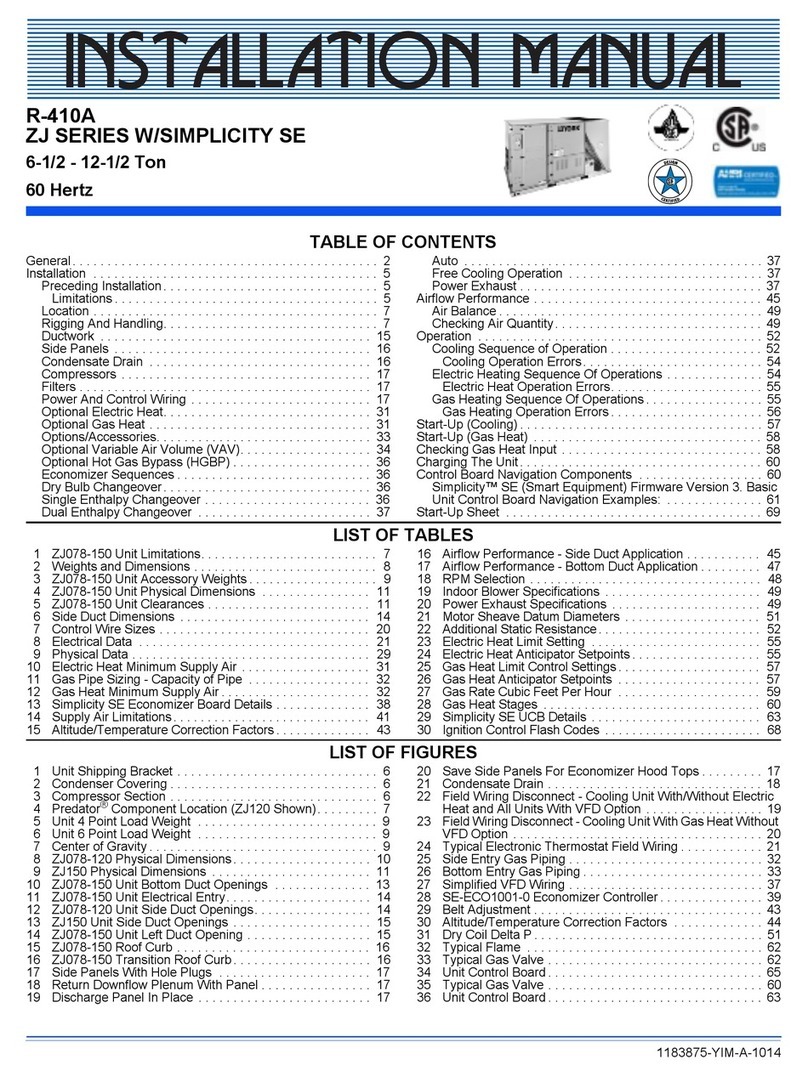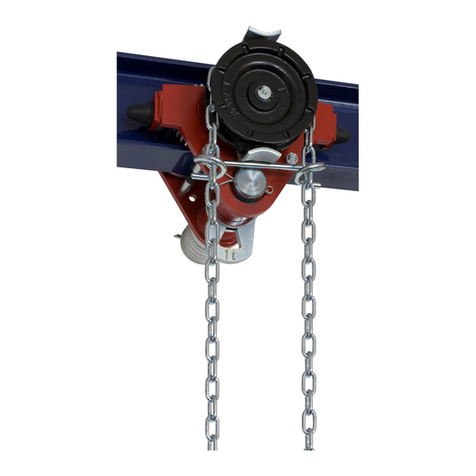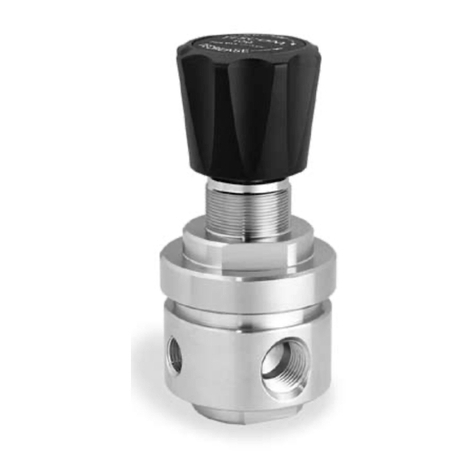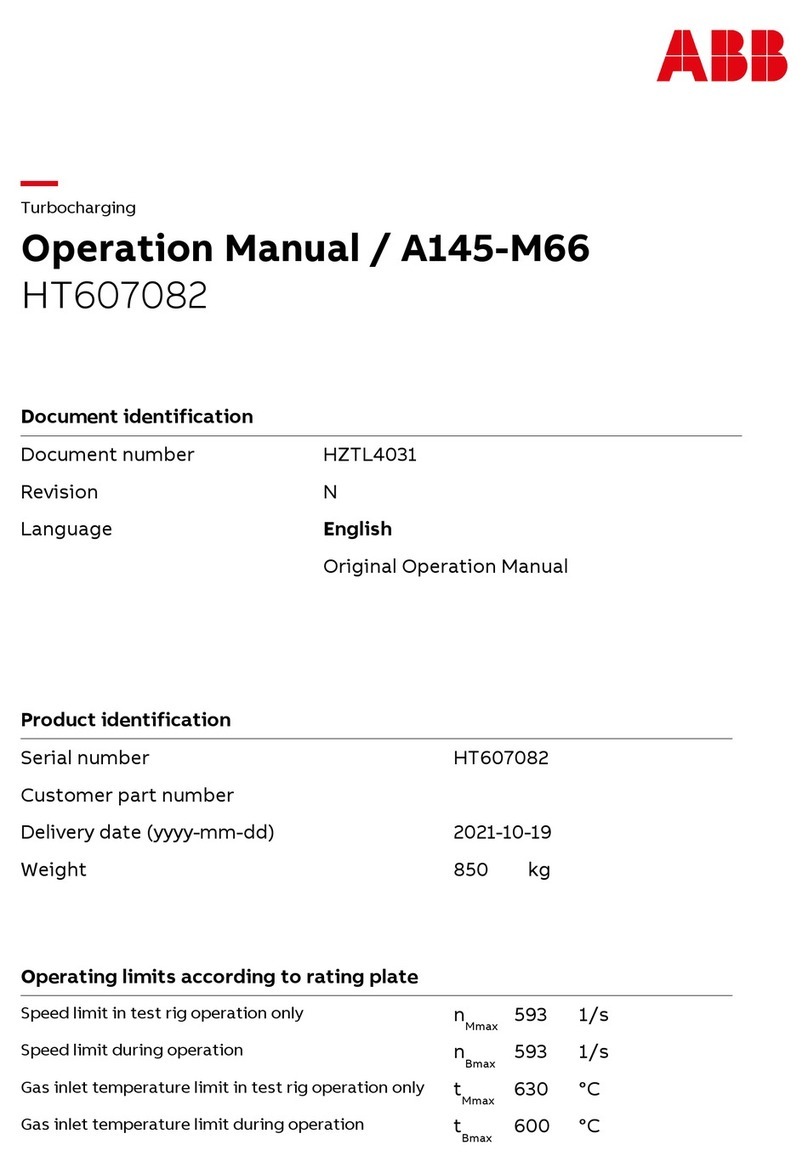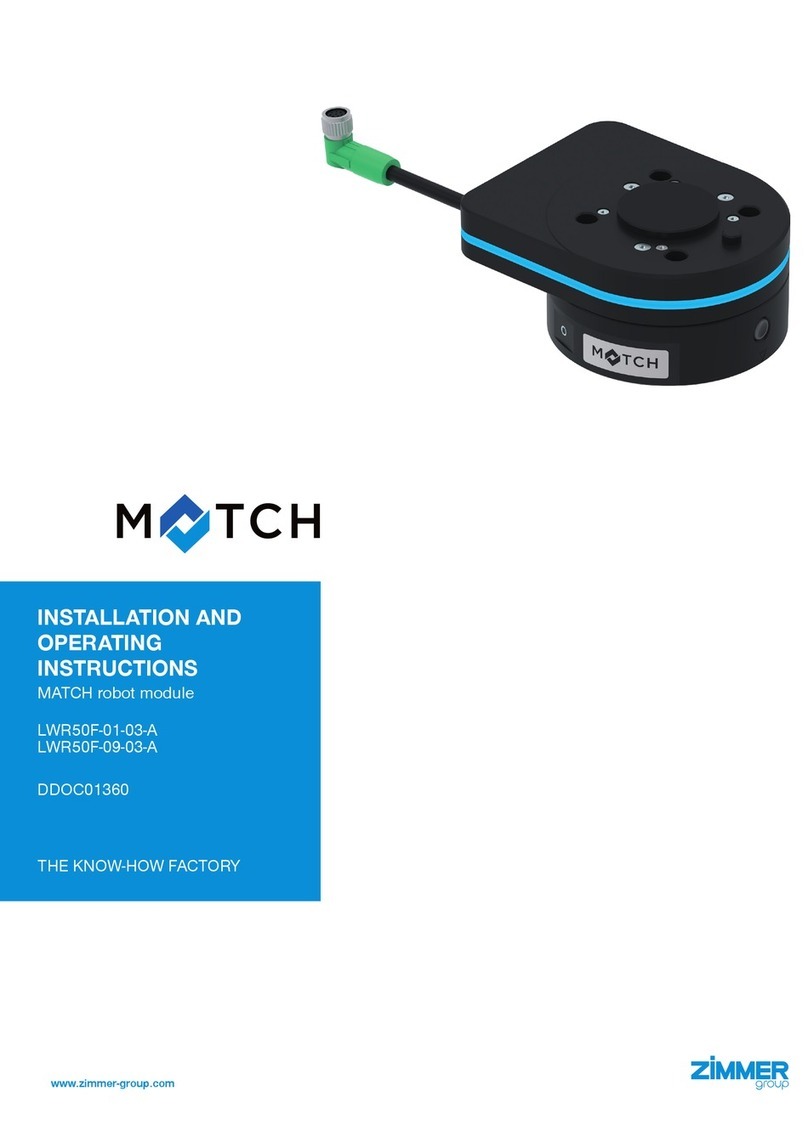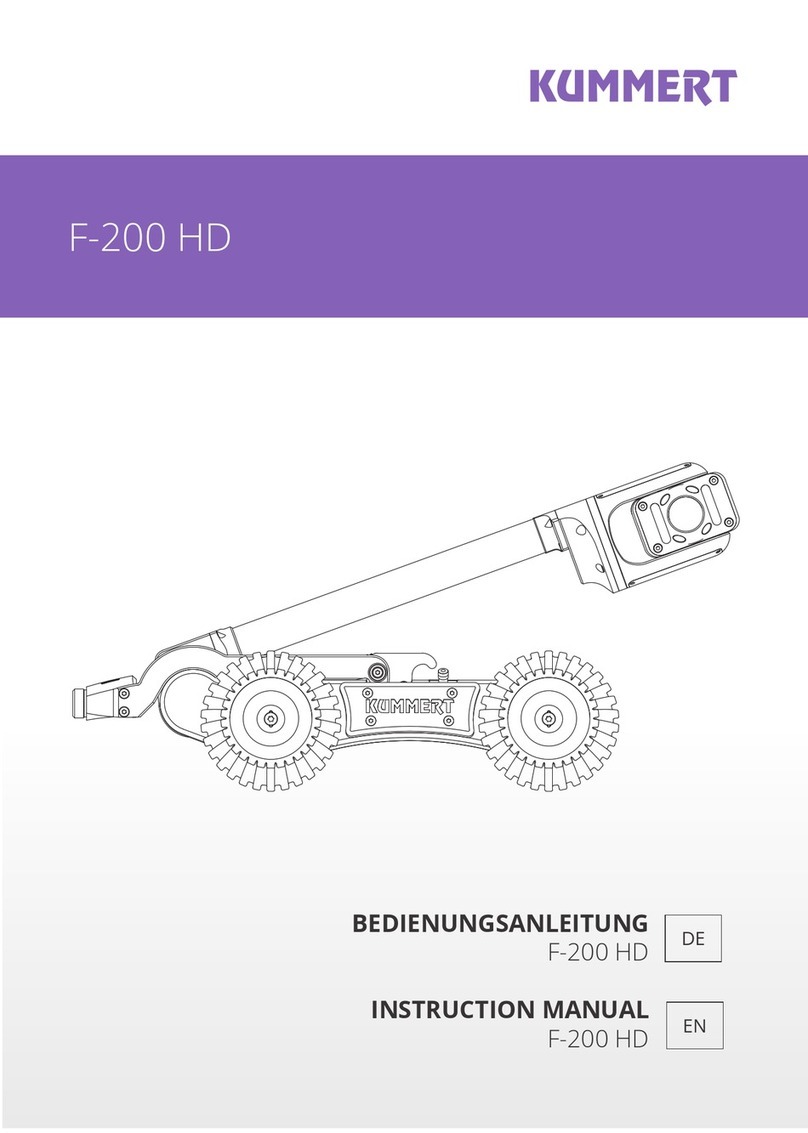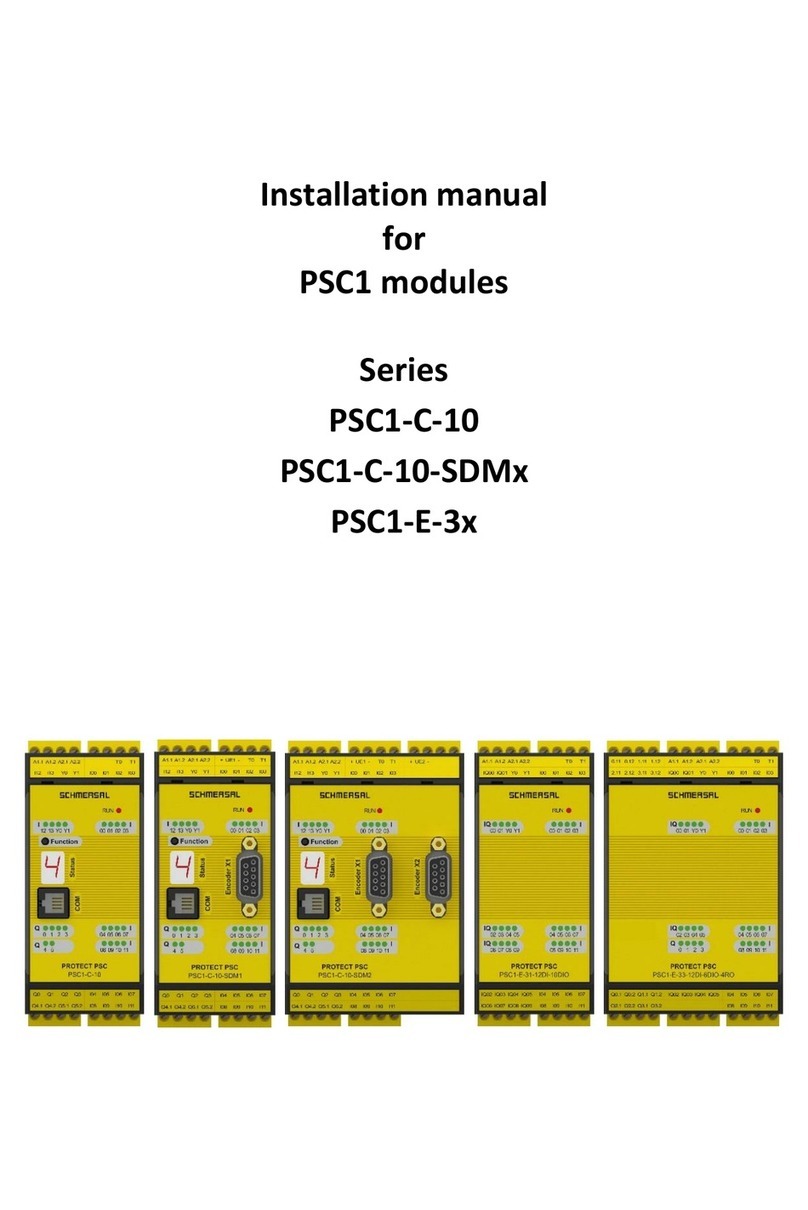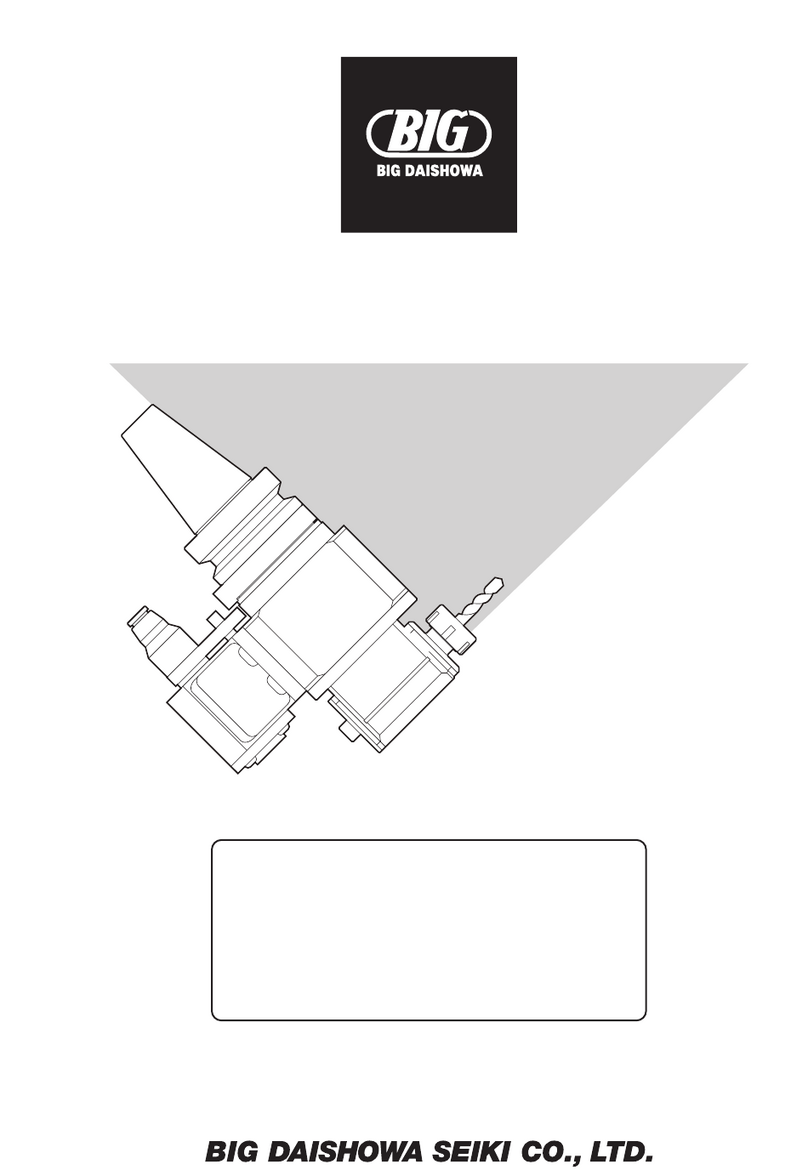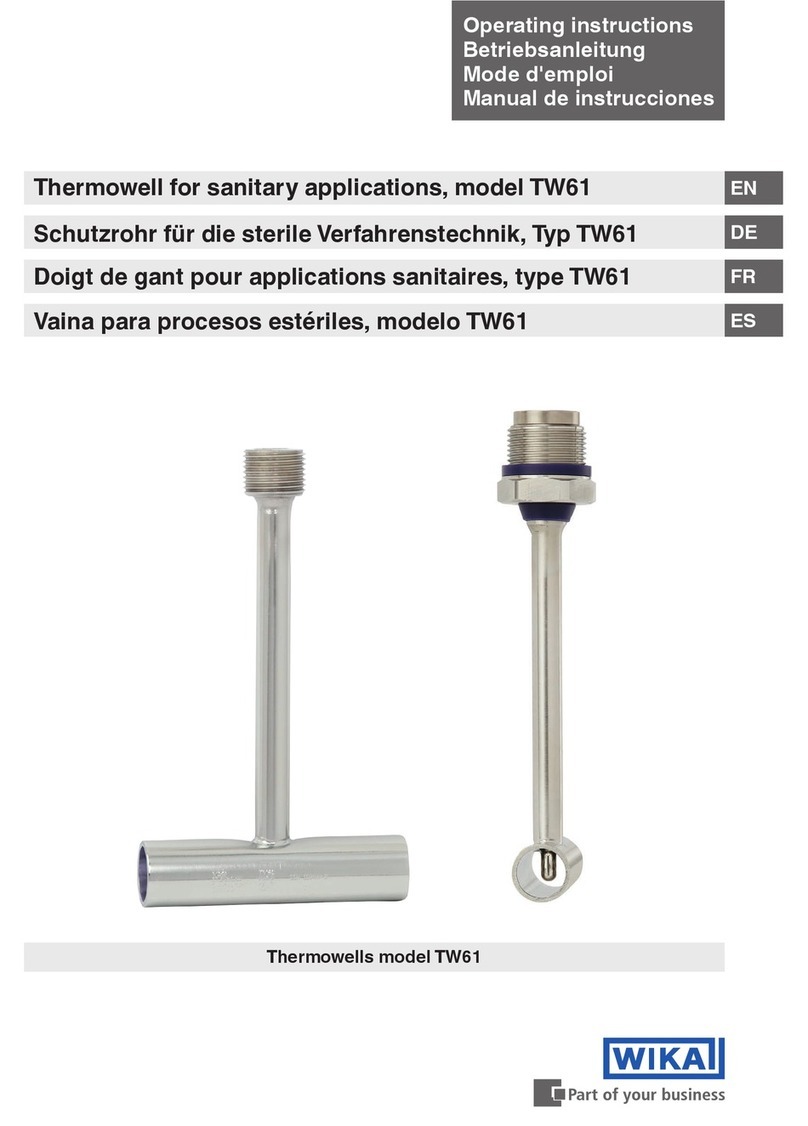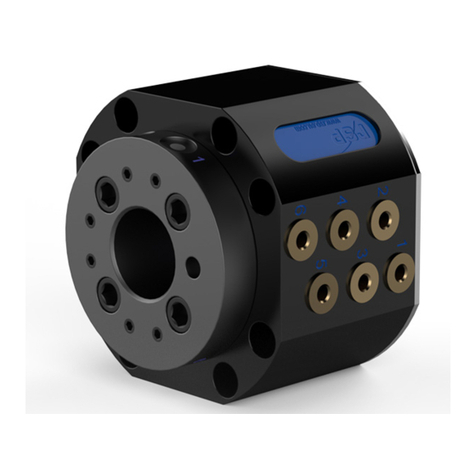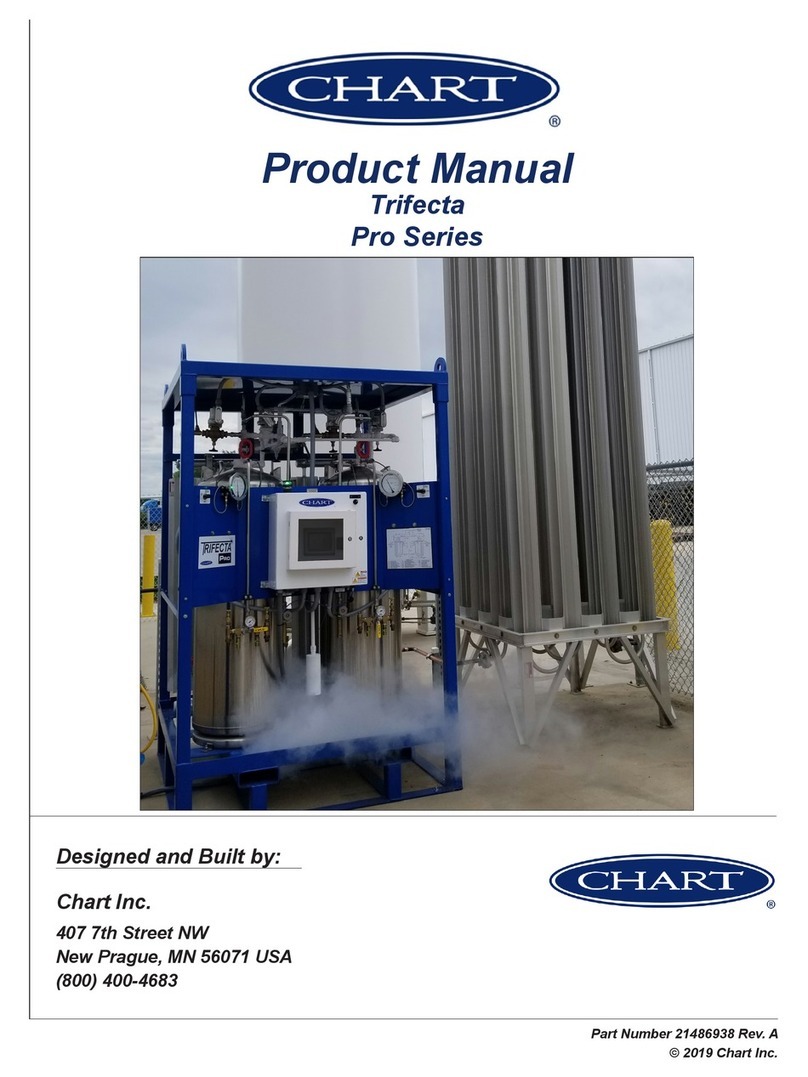Envirotech Instruments APM 460 PUF User manual

OPERATION MANUAL
PUF SAMPLER
Envirotech Model APM 460 PUF
Application
•Monitoring of Polycyclic Aromatic Hydrocarbons (PAHs)
•Monitoring of Pesticides and Polychlorinated Biphenyls
(PCBs)
Envirotech Instruments Pvt. Ltd.
A-271, Okhla Industrial Area, Phase-1, New Delhi – 110020
Tel No. 011-26813887, 26814139 Fax No.011-26811833/26810591
email envirotech@vsnl.com website www.envirotechindia.com

CHAPTER I
BACKGROUND
Polycyclic Aromatic Hydrocarbons (PAHs) have been extensively studied in recent years
due to their carcinogenic properties. Benzo (a) pyrene in particular has been studied
extensively and is a proven carcinogen in this class of compounds.
PAHs are ubiquitous in environment and are known to form due to anthropogenic and
natural sources.
Common pesticides and Polychlorinated Biphenyles (PCBs) are also found in ambient air
mostly due to their extensive use in agriculture.
Measurement of PAH and PCBs in ambient air can be done by passing large volume of air
through glass micro fibre filter of a High Volume Sampler where high molecular weight long
chain PAH and PCBs associated with particulates are expected to remain on the filter.
Later filter is extracted in Soxhlet apparatus by following standard procedure and
concentration of these compounds is determined using GC-FID/HPLC/GC-MS. Often
concentration of these compounds measured in ambient air is in nanogram per meter
cube.
Results of large number of research studies where PAH and PCBs are measured in filter
dust of HVS (TSPM) and in filter dust of RDS (PM10) have shown presence of PAH &
PCBs in particulates. As a result world over measurement of PAH/PCBs are done in
particulates collected on the filter paper. Monitoring results have also shown relatively
higher concentration of these compounds in PM10 dust compared to TSPM.
In recent years it has been realized that due to volatilizing of PAH and PCBs all fractions of
these compounds are not trapped with particulates on the glass microfibre filter. It is now
known that a major portion of PAH and PCBs, especially compounds with 3-4 rings are
passed through the filter. Thus ordinary High-Volume-Respirable Dust Sampler is not
suitable for sampling of these compounds. To find out ambient concentration of total
PAH/PCBs gaseous fraction of PAH/PCBs must also be sampled in a porous extractable
media. Poly Urethane Foam is one media which is widely used for sampling of these
compounds.

TECHNICAL SPECIFICATIONS OF APM 460 PUF
Flow Rate = 200 - 300 liters/min
Particle Fractionater = A cyclone device designed for flow range of 200-
250 liter/min for fractionating dust into two
fractions. PM10 dust is accumulated on the filter
paper (8’’ x 10’’ size) while coarse dust is
collected in a cup placed under the cyclone.
Puf Cartridge = Polyurethane foam for trapping the low molecular
weight PAH and PCBs
Size: 60mm diameter length about 75mm.
Puf Housing = Housing of APM 460PUF is compatible with
Standard borosilicate glass cartridges available
from SKC or other international vendors. It is
lined with Teflon and fitted at the bottom of filter
adapter casting.
Recommended Filter = Any standard 8”x10” filter such as Whatman
GF/A or EPM 2000 for sampling of PM10 dust
where high molecular weight PAH are collected
with particulates.
Sampling Time = upto 48 hours.
Sampling Time Record = Electromechanical Time Totalizer (0 to 9999.99
hours) accurate upto 0.6 minute gives actual on
time of the sampler.
Automatic sampling time
Control = A programmable Digital Timer is used to shut off
the sampler after a preset sampling interval.
Voltage stabilizer = Input Voltage in the range 190-245V is stabilized
to an acceptable range of 230 + 10V. The
Stabilizer will automatically shut down output
power if input voltage is below 180V or above
250V so that the Blower is protected.
Power Requirements = Nominal, 220V,Single Phase, 50-Hz AC mains
supply. Power consumption is 400 watts
Overall Size = Approximately 430 x 320 x 930mm.
Weight = 45 kg.

PUF SAMPLER APM 460PUF
Envirotech India’s leading manufacturer of air quality monitoring instruments has
pioneered the development of an indigenous PUF sampler where gaseous fraction of PAH
and PCBs present in the air are trapped in a PUF cartridge fitted just below 8’’ x 10’’ glass
microfibre filter. Thus APM 460PUF Sampler is a complete system using which PAH
present in particulate as well as gaseous phase are sampled for further analysis of various
components.
While designing the APM 460PUF sampler USEPA method number TO 13A and TO 4A
have been referred and the sampler has been developed to meet most of the sampling
system requirements outlined in these two methods. Besides decades of experience of
Envirotech in manufacturing of Respirable Dust Sampler which is most suitable to Indian
conditions has been incorporated in selecting user friendly features. Some of these
features of APM 460PUF are.
1. To ensure portability of the sampler a cyclone based PM10 sampler has been
designed and the PUF cartridge has been located just below the glass microfibre
filter paper.
2. The Cyclone has been designed for required flow rate of 200-300 liters/min for
fractionating dust into two fractions. PM10 dust passes through the cyclone and
gets deposited on the filter paper while coarse dust (above 10 micron) is removed
from the air and accumulates in the cup fitted under the cyclone hopper.
3. A brushless blower with heavy duty induction motor has been developed for
required flow rates. The Blower is robust in design and can be operated for 48 hrs
continuously so that sizeable PM10 dust sample is collected on filter paper and
gaseous fraction of PAH are trapped in PUF.
4. Instrument has been fitted with voltage stabilizer, time totalizer and digital timer for
un-attended operation.
5. The APM 460PUF Sampler is fitted with orifice & manometer flow metering system
for accurate measurement of air flow.
6. The APM 460PUF Sampler is compatible with PUF cartridges from any standard
vendor such as SKC etc..
7. To simplify installation and removal of the PUF cartridge the PUF holder has been
made modular and suitable gaskets & Teflon lining provided to ensure a leak tight
unit.

Figure 1
The figure above shows a schematic diagram of
the APM 460PUF Sampler while the photograph
shows the actual instrument.

CHAPTER II
PRINCIPLE OF OPERATION
Figure 1 shows a schematic diagram of the PUF Sampler Model APM 460PUF. Ambient
air laden with suspended particulates enters the system through the Inlet Pipe. As the air
passes through the cyclone, coarse, (non respirable dust) is separated from the air
stream by centrifugal forces acting on the solid particles. These separated particulates
fall through the cyclone‘s conical hopper and collect in the sampling bottle placed at its
bottom. The fine dust forming the Respirable Fraction (PM10) of the Total Suspended
Particulate (TSP) passes through the cyclone and is carried by the air stream to the Filter
Paper, clamped between the Top Cover and Filter Adaptor Assembly. The Respirable
Dust (PM10) is retained by the filter and particulates free gases pass through the PUF
cartridge immediately below the Filter holder assembly.
PARTICLE SIZE CUT OFF OF THE PUF SAMPLER APM 460PUF
The PUF sampler APM 460PUF has been extensively operated in parallel with reference
PM10 sampler in various climatic conditions and found giving comparable results.
Envirotech has decades of experience in manufacturing of cyclones which are fitted in
various models of the Respirable Dust Samplers since 1992. The cyclone of the PUF
sampler gives comparable PM10 values at flow rate in the range of 200-300 liters/min.
The Cyclone is made up of non-corrosive material of construction with smooth surface.
Cyclone assembly is so designed that it is easy to open for periodical cleaning purposes.
FLOW MEASUREMENT IN THE APM 460 PUF SAMPLER
The APM 460 PUF Sampler uses Envirotech‘s field proven Orifice Plate based Flow
Metering System. The design has proven its reliability through trouble-free operation of
few thousand field installations of Envirotech‘s popular APM 410/415 High Volume
Samplers and Respirable Dust Sampler model APM 451/460/460BL/460NL. The Orifice
Plate is built into the body of the Filter Adaptor Assembly just before the PUF cartridge
and there are no joints or leakage paths between the Orifice Plate and the filter. The

pressure drop across the orifice is measured by a Manometer, in which the scale is
calibrated in units of flow (m3/min). In the APM 460 PUF Sampler, the Manometer
Assembly is placed in the upper portion of the front panel assembly so that it is
convenient to read, and a reflecting tube support has been added to minimize parallax
error.
The glass tube containing the PUF cartridge is placed in a Teflon lined holder
immediately below the Filter Adaptor assembly. Suitable seal rings have been
incorporated at each joint to ensure a leak tight assembly.
MAIN PARTS AND CONTROLS
√
Refer to figure 1 and 2 to locate the controls and parts described in this
section.
Mains Input and its Fuse: The APM 460 PUF sampler requires 220 Volts AC
single phase, 50 Hz AC mains supply for operation. Mains power is
connected to the system through a three pin IEC socket provided at
the back of the instrument. An appropriate chord is provided with the
instrument. Use only a three pin AC mains socket so that earth /
ground connection of the instrument cabinet is maintained. A neon
indicator has also been provided to indicate the mains supply. An
over current cutoff has been provided to protect the system. If the
current protection trips off, you have to press the RED reset button
on the instrument panel. CAUTION: Do check the reason for over-
current tripping before re-starting the operation.
Power on/off switch :This DPST toggle switch is used to control the AC mains
power coming to the instrument.
Time Totalizer : The Time Totalizer is wired to operate only if the Blower, drawing
air through the sampler, is in operation. Therefore it records the
actual duration of each sample and can also be utilized to keep track
of preventive maintenance schedules of the instrument.
Digital Timer : The Timer is provided to shut off the instrument after pre set time.
The Digital Timer provided in APM 460PUF allows a user to
automatically control ON/OFF cycles. The equipment will
automatically start up or shutdown as per the program fed into the
timer. Details of operation of the timer are given in Chapter IV
Voltage Stabilizer: A voltage stabilizer is fitted in the instrument to control
supplies of input power within acceptable range 230 +10V. The
Stabilizer has 4 step input voltage control to give indicated out put

voltage. It has an inbuilt cut-off that will shut down the instrument at
too high or too low mains voltage. CAUTION: Operating the
instrument at too low (below 180V) and too high (above 250V) mains
voltage by bypassing the voltage stabilizer is likely to damage the
Blower Motor.
Top Cover : This is a single piece casting, filter Cover with provision of clamps for
fitting of the filter for collecting the Pm10 fraction.
Cyclone : This unit separates the coarse particulates from the air stream. This
coarse fraction gets accumulated in the sampling bottle placed under
the hopper assembly of cyclone while fine dust (PM10) passes
through the cyclone and is collected on the filter paper. The sampling
bottle MUST be emptied and cleaned after every run.

CHAPTER III
INSTALLATION AND PREPARATION FOR USE
The APM 460PUF Sampler is dispatched from the factory pretested and fully assembled. For
safe transit the Air Inlet Pipe is dismantled and has to be reassembled before the sampler can be
put to use.
ATTACHING THE AIR INLET PIPE
The Air Inlet Pipe is attached to the cyclone inlet by four socket head cap screws. An appropriate
Allen Key has been provided in the tool-kit of the instrument. Unscrew the retaining bolts, apply
some silicone grease on the faceplate gasket and fix the inlet pipe taking care to tighten the
retaining bolts uniformly. Mount the yellow color Inlet Cover Cap on the top of the inlet pipe.
Attention: Do not over tighten the retaining screws. It may damage the rubber
gasket of the inlet pipe bend.
PREPARING THE MANOMETER
The Manometer Assembly is provided to accurately measure the pressure drop across
the Orifice Plate fitted in the filter adaptor casting and its scale is graduated to read
directly the flow rate of air in meter cube per min. The manometer scale is not linear and
it is important to carefully zero the level of the liquid column prior to use.
The Manometer uses distilled water as a manometer fluid and a Filling Plug is provided
to allow topping up of the manometer fluid. A syringe with a needle has been provided in
the tool kit to facilitate filling of the fluid.
Use the following steps in sequence to top-up the manometer:
Open the Filling Plug Screw
Use the syringe to squirt approximately 16cc of water into the filling plug.
Cover the filling plug aperture with a finger and switch ON the Blower for a few
seconds (shutting it off immediately). The liquid column will oscillate up and down
in the manometer tube. Check that no air bubbles are trapped in the liquid column.

Allow the water column to settle down and check that the lower level of the
meniscus is at the zero mark of the scale. If necessary, add a few more drops of
water and repeat for above step to remove air bubbles.
When the water level has reached the zero mark, replace the filling plug screw
and tighten it in place.
Finer adjustment of zero adjustment can also be done by shifting the
manometer scale up or down.
CAUTION:
Fill a small quantity of water into the manometer at each step for making upto zero
mark as it is much more inconvenient to remove the extra fluid if the water level goes
beyond the zero level. Therefore fill it slowly and carefully.
In case, water level has gone above zero level, excess water has to
be taken out. It is recommended to flush out all water from the tank
after removing PVC pipe connections of the manometer to pressure
taps of orifice plate.
Hold the PVC tube, connected to glass tube, and blow air in PVC
tube connected to manometer tank, to drain all water from the tank. Ensure
that filling port is closed while this operation otherwise all water will
come out from filling port.
Now connect PVC tubes, again to pressure taps in correct polarity
PVC pipe of glass tube must be connected to lower pressure tap and the
PVC tube connected to manometer tank nozzle is connected to upper
pressure tap. Open the filling plug and fill up manometer fluid with the help of
syringe as described in above steps.

PREPARING THE FILTER
The respirable dust concentration is determined by a gravimetric analysis, requiring an
accurate estimation of the change in weight of the filter on account of the dust deposited
on it. As such, handling of the filter paper must be minimized and care should be taken
that the paper does not get sheared or damaged during handling.
Almost all the filter papers in use for High Volume Samplers are made of binder free
glass fibers and are expected to be non-hygroscopic. However, dust deposited on the
filter could be Hygroscopic. As such it is important to condition the filters prior to their
weighment. For conditioning the filters may be placed in a Desiccator where active
desiccant silica gel is kept. Normally filters should be conditioned at 25 deg C and 35%
Humidity for at least 16 hours both for initial weighment and after sample collection.
Check the following points during filter preparation:
Check for Pinholes: Inspect the filters against a bright lamp or light for
pinholes and micro-cracks.
Numbering: In case the filters are not pre-numbered, put identification
numbers on a corner of the underside of each filter.
Conditioning: Place the filter papers in a desiccator or conditioning room for
at least 16 hours to remove traces of moisture. Weigh the filters immediately
after they are taken out of the desiccator.
Attention: Ensure that your desiccator is having active desiccant
Silicagel.
Storage: Store the filters without folding the paper in a clean flat box.
Handling: Since the filter paper is binder-free, it is quite fragile. During
weighment and handling prior to sampling, do not fold the paper to form a
crease.

PREPARATION AND INSTALLATION OF PUF CARTRIDGE
PUF cartridge is to be
thoroughly cleaned prior to
use to remove any traces of
PAH or PCBs from previous
runs. For cleaning the PUF
cartridge follow the procedure
specified in standard test
methods such as EPA TO13
and after cleaning it should be
placed inside the glass tube.
Ensure that SS wire mesh is
placed at the bottom of glass
tube and rests on notch of the
tube. This loaded glass tube
with cartridge should be
placed inside the Teflon PUF holder and properly tightened with the help of
retainer Teflon ring. Tighten the PUF Holder assembly between the blower
and the filter adopter using the knurled rings. The PUF cartridge is re-
useable after extraction in Soxhlet apparatus for 12-16 hrs or as specified in
the test method. Detailed procedure of PUF cleaning and preparation is
given in standard USEPA method TO 13.
Precautions:
•Do not touch the PUF cartridge with bare hands. Handle only the
glass PUF holder from outside.
•During transit, cover the PUF holder with Aluminum foil and place it in
the glass jar provided with the instrument.
•Avoid installation of the PUF cartridge into the Glass holder in the field
as it is likely to get contaminated. A spare PUF holder has been
provided with the APM 460PUF sampler so that the PUF cartridge can
be loaded in the glass holder in a clean lab environment.

INSTALLING THE FILTER ON THE APM 460 PUF
The filter paper is mounted on the backing screen at the top of the Filter Adaptor
Assembly. The filter is clamped down by the top cover held in place by the four
wing nuts.
To mount the filter follow the steps below:
Loosen the four wing nuts and open the top cover.
Check that the filter clamping gasket and backing screen are clean.
Place the filter sheet on the backing screen taking care to ensure that it is
centralized.
The top cover is polarized, and fitted on the top of sampler with the help of two
non sliding wing nuts. Align the mounting slots to the eyebolts and gently lower it
on the filter adaptor pressing down the filter paper. Avoid repositioning the cover
since it is likely to shift the filter from its original position on the backing screen.
Uniformly tighten the cross wing nuts maintaining almost equal pressure on all
sides of the cover.

CHAPTER IV
OPERATION
Check that the following preparatory steps have been completed before starting up the
instrument:
•A pre-weighed filter has been installed in
the Filter holder.
•A fresh / clean PUF cartridge has been
loaded in the PUF Holder and the PUF
holder has been placed at its location
between the Filter Adaptor and Blower
Assembly.
•Check that the PUF Holder is positioned
centrally in the knurled rings and the rings
are tight – hand tightening is adequate.
•Check that distilled water is filled upto the
zero mark of the Manometer scale.
•Mains power is available to the instrument.
Open the door of the instrument and note the INITIAL Reading of the TIME TOTALIZER.
Note the digits display the operation time in HOURS (upto 2 places of decimal). So if the
reading is 1254.23 DO NOT interpret it as 1254 hours and 23 minutes.
Put the Main Power Switch on the Panel of the instrument ON. The Blower motor will come
ON with an audible sound. The manometer will indicate the flow rate of air through the
instrument. Allow the flow rate to stabilize for a few minutes and note down the flow rate in
Cubic Meters per minute. Close the door and leave the Sampler operating for the desired
sampling duration.
At the end of this time check and note down the Manometer reading to confirm the flow
rate prevailing at the end of sample collection. Switch OFF mains power and record the
FINAL TIME TOTALIZER reading. The difference between the final and initial reading will
give you the correct amount of time in HOURS that the instrument has operated.
Open the Filter Holder Cover and carefully remove the Filter paper. Note the filter should
be folded inwards to ensure that the sample is protected when you place the filter in a
carrying envelope. Open the PUF Holder and remove the PUF Cartridge including the

glass PUF Carrier tube. Immediately cover the Glass tube with clean Aluminum foil and
store in a safe container for transit to the lab for analysis.
The procedure above describes the steps to be taken for a manually supervised operation
of the instrument. A small degree of automation to facilitate startup and shut down of the
instrument is available via the Timer provided on the front panel.

CHAPTER VI
MAINTAINANCE
The APM 460 PUF Sampler haa few moving parts that would require maintenance. The
flow metering is performed by a completely static orifice plate assembly requiring no
regular attention. However, for trouble free operation, the manometer assembly used to
indicate the flow rate and the blower causing the suction must be periodically cleaned only
distilled water should be used as manometer fluid.
PREVENTIVE MAINTENANCE OF THE BLOWER ASSEMBLY
The Blower used to sample air through the instrument in driven by a belt coupled ½hp
motor. The unit has been designed for trouble free operation over extended periods of
time. However, as the prime-mover of the system it will have the most wear and tear and
for optimum performance must be inspected at regular intervals as per schedule given
below.
After every 1000 hrs of operation the condition of belt slack should be checked.
If belt is loose than shift the motor with the help of mounting bolts and adjust the
tension so that the belt slack remains in normal / safe range. If noise level
increases with time it is often because of a loose belt.
Due to the high Blower RPM some amount of belt wear is normal and can be
expected. During belt inspection if you observe excessive shredding of the belt
and powder form of rubber deposits on the inside portions of the unit it would be
best to replace the belt. Normal life of the belt is one year or 3500 hrs operation.
A new belt will show slight elongation after the first 24 hrs of operation so you
should check the belt tension after 24 hrs. of changing the belt only once.
CAUTION
Do not delay replacement of the belt until it is completely worn and finally breaks. This will
disrupt the sample being collected. When the belt breaks and can also cause damage to
your instrument. The time totalizer reading can be conveniently utilized to determine when
the belt is due for check-up or replacement.

MAINTENANCE OF THE MANOMETER ASSEMBLY :
The manometer assembly uses distilled water as a manometer fluid. With time the water
acquires residues and floating precipitate forms are seen which tends to clog the nozzles
connecting the manometer tank to the manometer tube. To remove the precipitate and
other deposits the manometer must be flushed out periodically (at least once in a month).
If the instrument is not expected to remain in use for two weeks or more it is recommended
that the water be drained out from the manometer tank to avoid formation of the
precipitate. To flush and clean the manometer assembly follow the steps given below:
Observe the polarity of the PVC pipes connecting the manometer to the pressure
taps of the Orifice Plate. The glass tube of the manometer is connected to the lower
nozzle while the manometer tank is connected to the upper nozzle of the filter
adaptor casting. Remove both the PVC pipes from the orifice plate pressure taps.
Hold the pipe from the glass tube pointing downwards and away from the
instrument and blow into one pipe connected to the tank. The old water residues will
be drained from the system.
Refill the manometer with fresh distilled water (through the filling plug) and drain it
as above. Repeat the process 2-3 times to thoroughly flush out any residues.
Re-connect the PVC pipes to their respective places on the filter adaptor casting
and fill fresh distilled water prior to use of the instrument.

REPLACING A BROKEN MANOMETER TUBE
Occasionally the Glass Manometer tube will get damaged in transit and must be replaced.
To change the tube follow the steps given below.
Open the four retaining screws to remove the front panel of the instrument.
Observe the polarity of the PVC pipes connecting the manometer to the
pressure taps of the Orifice Plate. The glass tube of the manometer is connected
to the lower nozzle while the manometer tank is connected to the upper nozzle
of the filter adaptor casting. Remove both the PVC pipes form the orifice plate
pressure taps.
Open the two screws retaining the upper end coupling of the manometer tube.
The two screws near the bottom of the tube retain the tank assembly. On
removing the tank assembly and upper coupling the tube support will open out
and the manometer tube will come out.
Check that the seal rings rubber (O-rings) in the upper coupling and tank
opening are in place.
Apply a little silicone grease on the ends of the Manometer tube and insert one
end firmly in the tank assembly and the other into the upper coupling.
Place the tube support reflector behind the manometer tube and mount the
assembly at its place on the front panel.
Re-connect the PVC tubes connecting the manometer assembly to the pressure
taps of the Orifice plate.
Mount the front plate on the main instrument and re-fill manometer fluid into the
system as per instructions in chapter III of this manual.
Note:-
1. No warranty is given on parts made up of Glass.
2. Warranty is also not applicable for moving parts that are expected to wear
and tear with normal operation such as Blower, Bearing and Belt etc.
Table of contents
